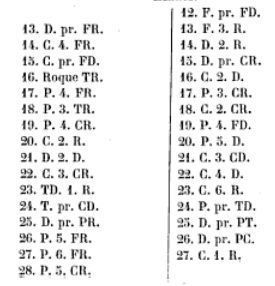I, too, learned how to play chess from books using the descriptive notation. (I am older than dirt!  ) In some ways, it is clearer than algebraic notation. One example that comes to mind: The King Bishop Pawn squares are the weakest squares at the start of the game due to the fact that the square is only guarded by the King himself.
) In some ways, it is clearer than algebraic notation. One example that comes to mind: The King Bishop Pawn squares are the weakest squares at the start of the game due to the fact that the square is only guarded by the King himself.
To express this same fact in algebraic: the squares f2 and f7 are the weakest squares at the start of the game due to the fact that squares are only guarded by the Kings themselves.
I think that the first, in the descriptive notation, is easier to understand than the last, (algebraic notation).
I, myself, record my games in long algebraic, (or is it called coordinate?), notation: 1. e4 (in the short form) becomes 1. e2-e4 or 1. Pe2-e4. [Using White's first move as an example.] I perfer this form because there is no need to clarify for possibly ambigious moves. (By this I mean, if there are Knights on f7 and f5, Nd6 has to be clarified as to which Knight is actually moved. I know, both short algebraic and descriptive have methods to resolve such quandries. Also, it is easy for a player to record their move without even realizing that the there may be two possible moves. Not that much of a problem today when most players are playing online.)
















WOW
What on earth is 9.Kt-K5 in your picture??
I haven't heard of a Kt.
Are they talking about a pawn going to e5?
They can't be talking about the king going to e5 what on earth. I'm so confused.
You took a screen shot at move 9 and not move 1.
What on earth is a Kt.
A KNIGHT